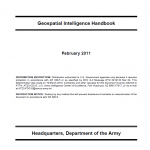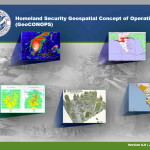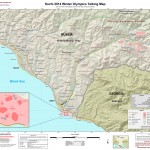The Homeland Security Geospatial Concept of Operations (GeoCONOPS) provides an understanding of the current landscape for the coordination of disaster response geospatial activities at the Federal level. The document serves the geospatial communities that support emergency management activities of the Federal government under Presidential Policy Directive 8 (PPD-8). This includes individual Emergency Support Functions (ESFs), the Joint Field Offices, FEMA Regional Coordination Centers (RRCC), and the National Response Coordination Center (NRCC). Stakeholders and actors representing the federal geospatial community have been extensively engaged in providing input for the development of the GeoCONOPS document. The GeoCONOPS serves as a guide to the Federal departments and agencies providing geospatial support under the Stafford Act which defines the programs and processes by which the Federal Government provides disaster and emergency assistance to state and local governments, tribal nations, eligible private nonprofit organizations, and individuals affected by a declared major disaster or emergency.
Read more →





